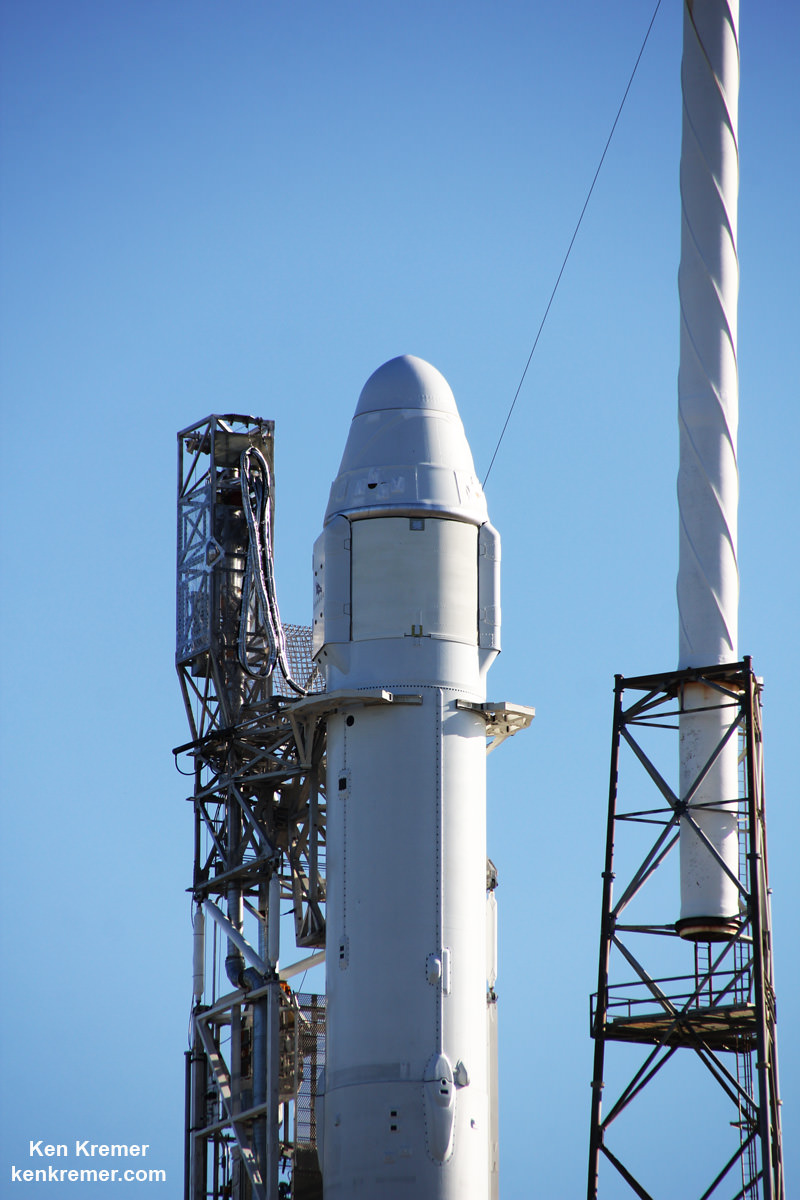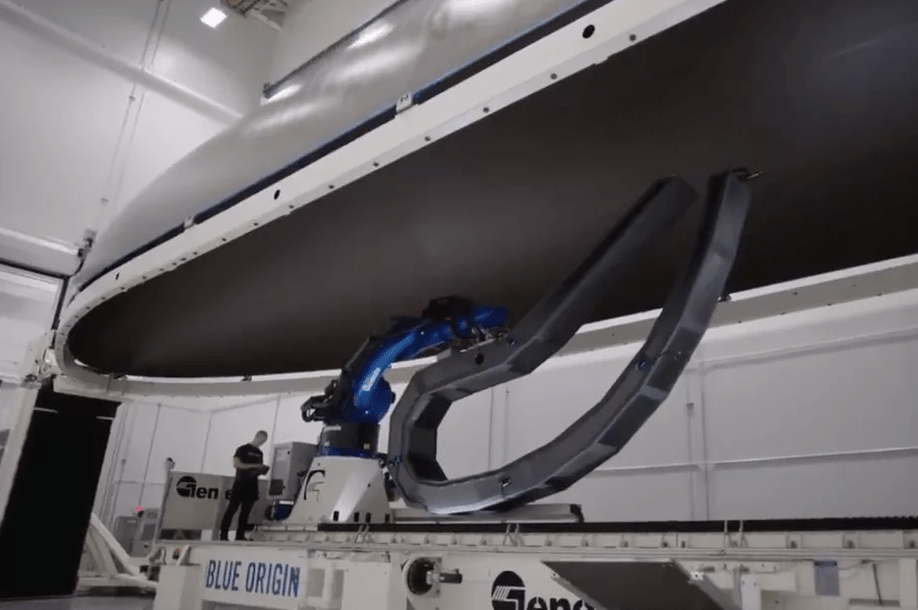If there is one driving force in the commercial space industry it is economics. The whole concept of reusable booster rocket emphasizes the importance of getting launch costs down. SpaceX, the company leading the charge in trying to bring launch costs down, doesn’t just recover booster rockets however. It also recovers the rocket fairings that hold the payload during launch. SpaceX’s original plan was to capture the fairings as they fell back to Earth using specially equipped ships with nets to catch them before they landed in the ocean. Now, however, the company has transitioned to simply fishing fairings out of the ocean after they splash down, and that seems to be working just fine.
Continue reading “SpaceX has Given up Trying to Catch Rocket Fairings. Fishing Them out of the Ocean is Fine”Every Part of Blue Origin’s New Glenn Rocket is Gigantic, Including its Nose Cone
Massive. Enormous. Huge. Gigantic. And whatever other words you find in the thesaurus all do the job when it comes to describing Blue Origin’s New Glenn Rocket. Especially its nosecone.
Continue reading “Every Part of Blue Origin’s New Glenn Rocket is Gigantic, Including its Nose Cone”SpaceX Launches Another 60 Starlink Satellites
In May of 2019, Elon Musk began delivering on his promise to create a constellation of satellites (named Starlink) that would offer broadband internet access. It all started with the launch of the first sixty Starlink satellites and was followed by Musk sending the inaugural tweet using the service this past October. Earlier today, another batch of Starlink satellites was sent into space as part of a live-streamed launch event.
The mission, known as Starlink-1, saw the launch of another 60 satellites from Space Launch Complex 40 at Cape Canaveral Air Force Station, Florida, atop a Falcon 9 rocket. Unlike previous launches, this mission involved the latest version of Starlink (Starlink 1.0), which feature a number of upgrades and refinements over the previous version (Starlink 0.9) and made this mission the heaviest Starlink launch to date.
Continue reading “SpaceX Launches Another 60 Starlink Satellites”SpaceX Does it Again with Second Retrieval of Falcon Heavy Rocket

SpaceX has made some amazing accomplishments in the past few years, all of which have been in keeping with Elon Musk’s promise to cut the costs of space exploration. And with all the excitement surrounding the Starship Hopper and its first hop tests, there was one very important accomplishment that seems to have faded into the background a little.
Luckily, SpaceX reminded everyone about it this week, as the company conducted the second successful launch of their Falcon Heavy rocket from NASA’s Kennedy Space Center. But what was especially impressive this time around is the fact that they managed to retrieve all three of the Falcon Heavy’s rocket boosters, as well as the payload fairings.
Continue reading “SpaceX Does it Again with Second Retrieval of Falcon Heavy Rocket”SpaceX Uses a Thrice-Launched Booster to Send 64 Satellites Into Space.
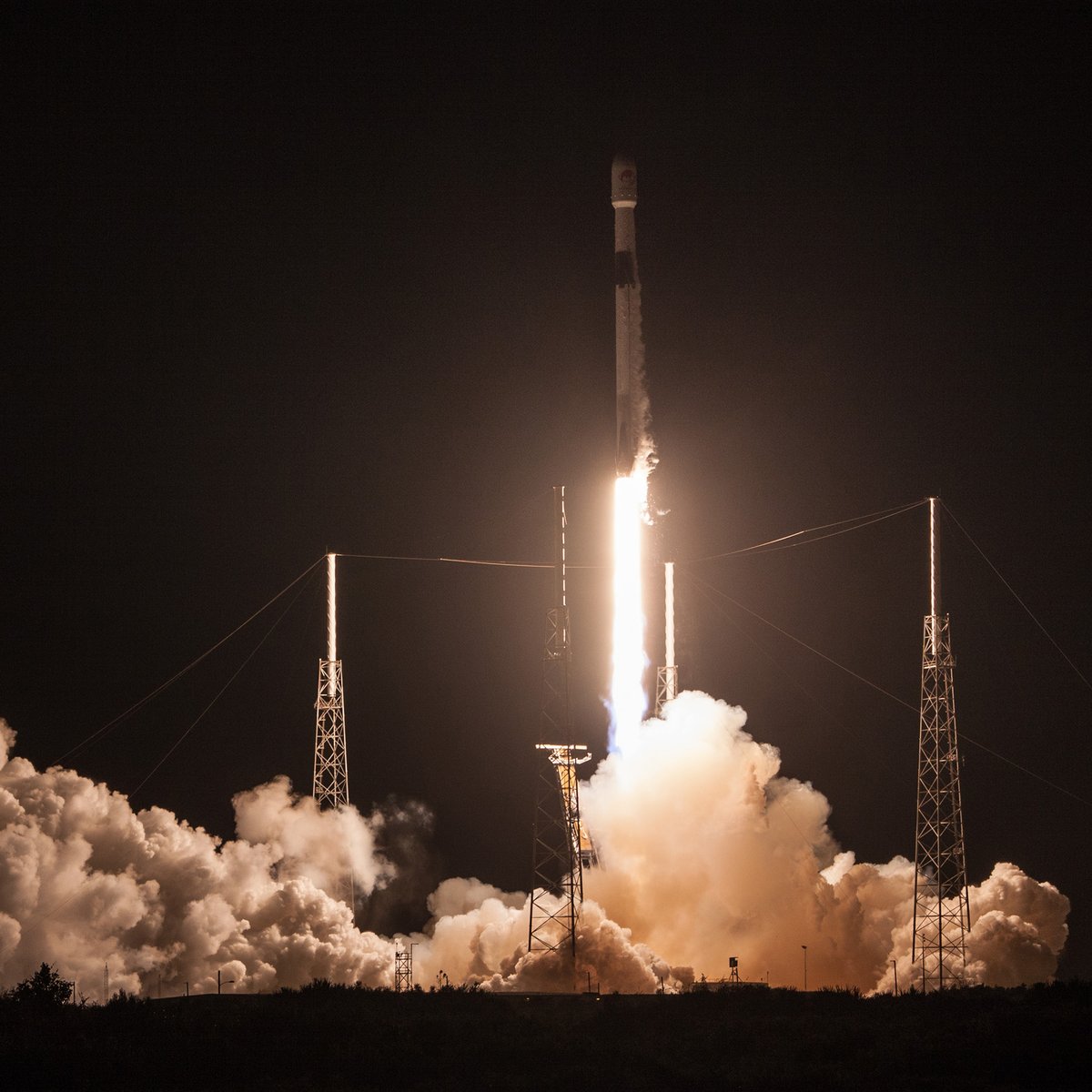
Earlier today (Monday, Dec. 3rd), private aerospace giant SpaceX launched its Spaceflight SSO-A: SmallSat Express mission. The launch took place from Space Launch Complex 4E (SLC-4E) at Vandenberg Air Force Base in California. Aboard the rocket were 64 spacecraft, consisting of microsatellites, cubesates, technology demonstrators and educational research endeavors.
This mission was a milestones for a number of reasons. For Spaceflight Industries, which arranged for the cargo to be delivered to a Sun-Synchronous Low Earth Orbit (SSO), it was the largest single rideshare to be launched from US soil. For SpaceX, it was the third time that the rocket’s first stage booster had been launched and retrieved, bringing us ever closer to the day when Elon Musk’s vision of completely reusable rockets becomes a reality.
Continue reading “SpaceX Uses a Thrice-Launched Booster to Send 64 Satellites Into Space.”
SpaceX Launches the First of Thousands of Space Internet Satellites, but Didn’t Quite Catch the Fairing
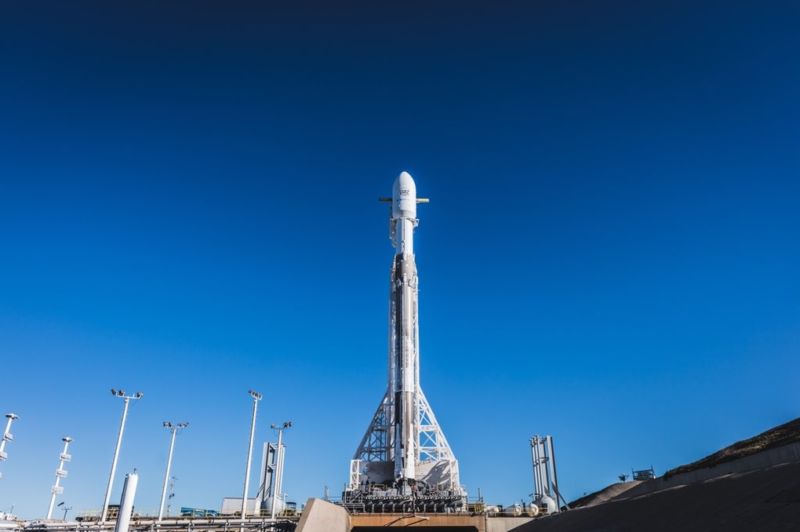
After multiple delays, SpaceX’s PAZ mission launched from from Space Launch Complex 4 East (SLC-4E) at Vandenburg Air Force Base on the morning of Thursday, February 22nd. Shortly after it reached orbit, the rocket deployed its payload (the PAZ Earth Observing satellite) as well as and two Starlink demonstrations satellites that will test SpaceX’s ability to provide broadband internet service from orbit.
In addition, this launch was the first time that SpaceX would be attempting to “catch” the payload fairings from a Falcon 9 rocket using a retrieval ship. As part of their plan to make their rockets fully reusable, the rocket’s fairings were equipped with deployable chutes that would control their descent to the Pacific Ocean. Once there, the newly-commissioned “Mr. Steven” retrieval ship would be waiting to catch them in its net.
As noted, the primary mission for this launch was the deployment of the the PAZ satellite to low-Earth orbit. This synthetic-aperture radar satellite was commisioned by Hisdesat, a Spanish commercial satellite company, for governmental and commercial use. Its purpose s to generate high-resolution images of the Earth’s surface, regardless of whether there are clouds covering the ground.
https://www.instagram.com/p/BfgHKDNAplx/
The secondary payload consisted of two experimental satellites – Microsat-2a and 2b – which are the first phase in SpaceX’s plan to deliver broadband internet service to the entire world. The plan calls for the deployment of more satellites in phases, reaching a total of 4,000 by 2024. However, it was the attempted retrieval of the rocket’s payload fairings that was of particular interest during the launch.
To be fair, this would not be the first time that SpaceX’s attempted to retrieve payload fairings. In March of 2017, SpaceX successfully recovered the fairings for one of their Falcon 9s, which allowed them to recoup an estimated $6 million dollars from that launch. At present, SpaceX indicates that the cost of an individual Falcon 9 launch is estimated to be around $62 million.
If the payload fairings could be recovered regularly, that means that the company could stand to recoup an additional 10% from every individual Falcon 9 launch. These additional savings would not only make the company more competitive, but could allow for additional mission profiles that are currently considered too expensive.
Missed by a few hundred meters, but fairing landed intact in water. Should be able catch it with slightly bigger chutes to slow down descent.
— Elon Musk (@elonmusk) February 22, 2018
On Thursday Morning, SpaceX founder Elon Musk posted a picture of Mr. Steven taking to sea on Instagram with the following statement:
“Going to try to catch the giant fairing (nosecone) of Falcon 9 as it falls back from space at about eight times the speed of sound. It has onboard thrusters and a guidance system to bring it through the atmosphere intact, then releases a parafoil and our ship with basically a giant catcher’s mitt welded on tries to catch it.”
The launch, which was covered via webcast, went as planned. After taking off amid clear skies, the Falcon 9 reached orbit and deployed the PAZ satellite without incident, and the two Starlink satellites were deployed shortly thereafter. However, the webcast ended without providing any information about the status of the retrieval of the payload fairings.
At 7:14 am, Musk tweeted an update about the attempted retrieval, indicating that the fairings had landed in the ocean a few hundred meters from where Mr. Steven was waiting to catch them. While unsuccessful, Musk was optimistic about future attempts to retrieve payload fairings, saying:
“Missed by a few hundred meters, but fairing landed intact in water. Should be able catch it with slightly bigger chutes to slow down descent.”
As always, Musks seems undeterred by a setback and the company is moving ahead with its plans for expanded reusability. If successful, future attempts at retrieval are likely to involve the second stages of the Falcon 9 and Falcon Heavy rockets. Given all the possibilities that this will allow for, there are many who want to see Musk’s latest venture to succeed.
In the meantime, check out this webcast of the launch:
Further Reading: ArsTechnica
Here’s How SpaceX is Planning to Recover Rocket Fairings: a Boat With a Net Called Mr. Steven

When visionary entrepreneur Elon Musk founded SpaceX in 2002, he did so with the intention of rekindling human space exploration and sending humans to Mars. Intrinsic to this vision was the reduction of costs associated with individual launches, which has so far been focused on the development of reusable first-stage rockets. However, the company recently announced that they are looking to make their rocket’s payload fairings reusable as well.
The payload fairing is basically the disposable shell at the top of the rocket that protects the cargo during launch. Once the rocket reaches orbit, the fairings falls away to release the payload to space and are lost. But if they could be retrieved, it would reduce launch cost by additional millions. Known as “Mr. Steven”, this new retrieval system consists of a platform ship, extended arms, and a net strung between them.
Mr. Steven is not unlike SpaceX’s Autonomous Spaceport Drone Ships (ASDS), which are used to retrieve first stage rocket boosters at sea. SpaceX has two operational drone ships, including Just Read the Instructions – which is stationed in the Pacific to retrieve launches from Vandenberg – and Of Course I Still Love You, which is stationed in the Atlantic to retrieve launches from Canaveral.

Recently, Teslarati’s Pauline Acalin captured some photographs of Mr. Steven while it was docked on the California coast near Vandenberg Air Force Base, where it preparing to head out to sea in support of the latest Falcon 9 launch. Known as the PAZ Mission, this launch will place a series of Spanish imaging satellites in orbit, as well as test satellites that will be part of SpaceX’s plan to provide broadband internet service.
Originally scheduled for Wednesday, February 21st, the launch was scrubbed due to strong upper level winds. It is currently scheduled to take place at 6:17 a.m. PST (14:17 UTC) on Thursday, February 22nd, from Space Launch Complex 4 East (SLC-4E) at the Vandenburg Air Force Base. After the cargo is deployed to orbit, the fairings will fall back slowly to Earth thanks to a set of geotagged parachutes.
These chutes will guide the fairings down to the Pacific Ocean, where Mr. Steven will sail to meet them. The fairings, if all goes as planned, will touch down gently into the net and be recovered for later use. In March of 2017, SpaceX successfully recovered a fairing for the first time, which allowed them to recoup an estimated $6 million dollars from that launch.
At present, SpaceX indicates that the cost of an individual Falcon 9 launch is an estimated $62 million. If the payload fairings can be recovered regularly, that means that the company stands to recoup an additional 10% of every individual Falcon 9 launch.
SpaceX’s fairing grabber, Mr. Steven, a couple days ago preparing to ship out for Wednesday’s launch at Vandenberg. @Teslarati #paz #Starlink pic.twitter.com/lfWjUGy56k
— Pauline Acalin (@w00ki33) February 19, 2018
This news comes on the heels of SpaceX having successfully launched their Falcon Heavy rocket, which carried a Tesla Roadster with “Spaceman” into orbit. The launch was made all the more impressive due to the fact that two of the three rocket boosters used were successfully recovered. The core booster unfortunately crashed while attempted to land on one of the ASDS at sea.
At this rate, SpaceX may even start trying to recover their rocket’s second stages in the not-too-distant future. If indeed all components of a rocket are reusable, the only costs associated with individual launches will be the one-time manufacturing cost of the rocket, the cost of fuel, plus any additional maintenance post-launch.
For fans of space exploration and commercial aerospace, this is certainly exciting news! With every cost-cutting measure, the possibilities for scientific research and crewed missions increase exponentially. Imagine a future where it costs roughly the same to deploy space habitats to orbit as it does to deploy commercial satellites, and sending space-based solar arrays to orbit (and maybe even building a space elevator) is financially feasible!
It might sound a bit fantastic, but when the costs are no longer prohibitive, a lot of things become possible.
Further Reading: Teslatari, TechCrunch
SpaceX Resuming Launches from Damaged Pad 40 on Dec. 4 with Station Resupply Flight for NASA; Covert Zuma Remains on Hold
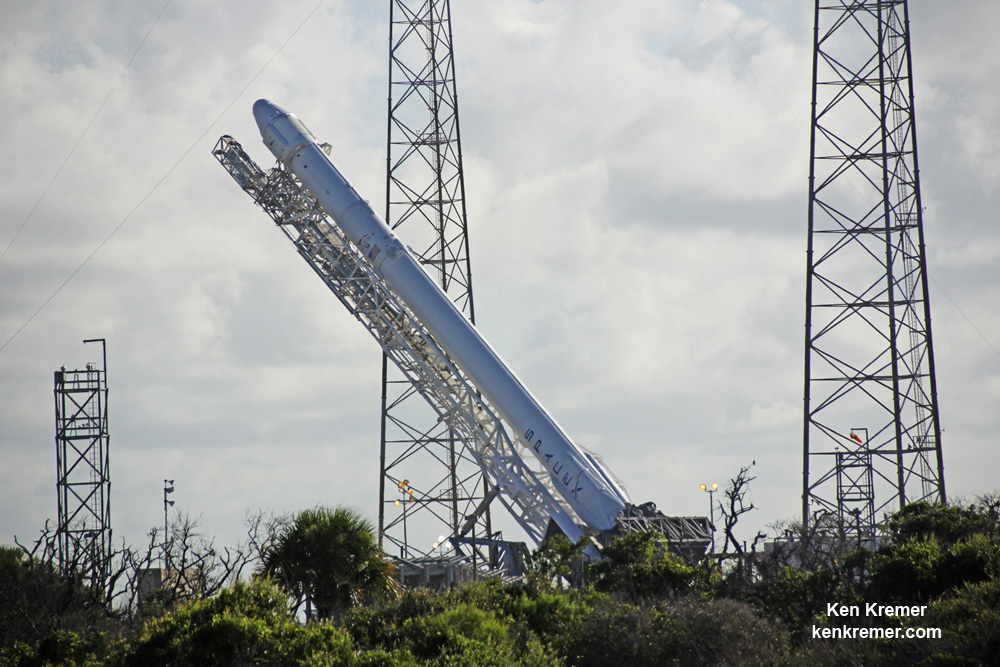

KENNEDY SPACE CENTER, FL – After postponing last week’s liftoff of the covert ‘Zuma’ spy satellite due to last minute concerns about the reliability of the payload fairing encapsulating it while poised for liftoff at KSC pad 39, SpaceX is set to at last resume launches from their previously damaged and now repaired Cape Canaveral pad 40 with a cargo resupply mission for NASA to the International Space Station (ISS) on Dec 4.
NASA and SpaceX have jointly decided to move forward with the Dragon CRS-13 cargo blastoff apparently because the mission does not involve use of the problematical payload fairing that halted last weeks planned Falcon 9 launch with the rocket and the mysterious Zuma payload.
Zuma was ready and waiting at pad 39A for the GO to launch that never came.
Then after a series of daily delays SpaceX ultimately announced a ‘stand down’ for super secret Zuma at pad 39A on Friday, Nov. 17, for the foreseeable future.
SpaceX engineers also had to deal with the after effects of a fire that broke out on a Merlin engine test stand during preparations for a hot fire test that resulted from a leak during a ‘LOX drop’ that halted testing of the Block 5 version of the Merlin 1D.
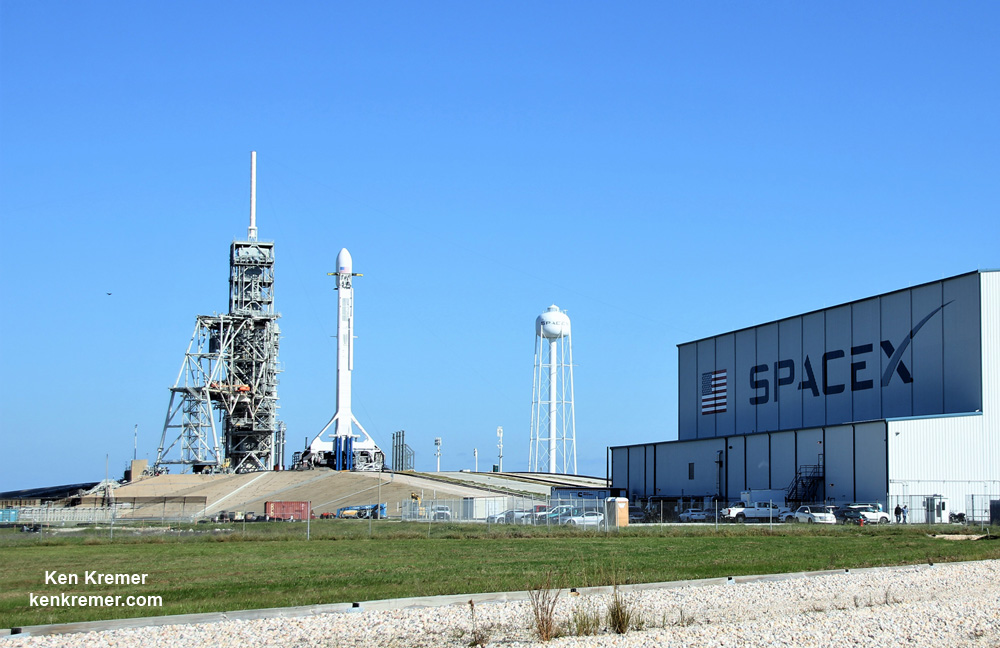
Since SpaceX’s gumdrop shaped Dragon cargo freighter launches as a stand alone aerodynamically shielded spacecraft atop the Falcon 9, it does not require additional protection from atmospheric forces and friction housed inside a nose cone during ascent to orbit unlike satellites with many unprotected exposed surfaces, critical hardware and delicate instruments.
Thus Dragon is deemed good to go since there currently appear to be no other unresolved technical issues with the Falcon 9 rocket.
“NASA commercial cargo provider SpaceX is targeting its 13th commercial resupply services mission to the International Space Station for no earlier than 2:53 p.m. EST Monday, Dec. 4,” NASA announced on the agency blog and social media accounts.
The Dec. 4 launch date for Dragon CRS-13 was announced by NASA’s space station manager Dan Hartman during the Orbital ATK Antares/Cygnus launch campaign that culminated with a successful blastoff last Sunday, Nov 12 from NASA’s Wallops Flight Facility on Virginia’s eastern shore.
But the targeted Dec 4 liftoff from Space Launch Complex 40 on Cape Canaveral Air Force Station, FL, was cast in doubt after SpaceX disclosed the payload fairing issue related launch delay on Friday.
Since last week SpaceX engineers have been busy taking the time to carefully scrutinize all the pertinent fairing data before proceeding with the top secret Zuma launch.
“We have decided to stand down and take a closer look at data from recent fairing testing for another customer,” said SpaceX spokesman John Taylor last Friday.
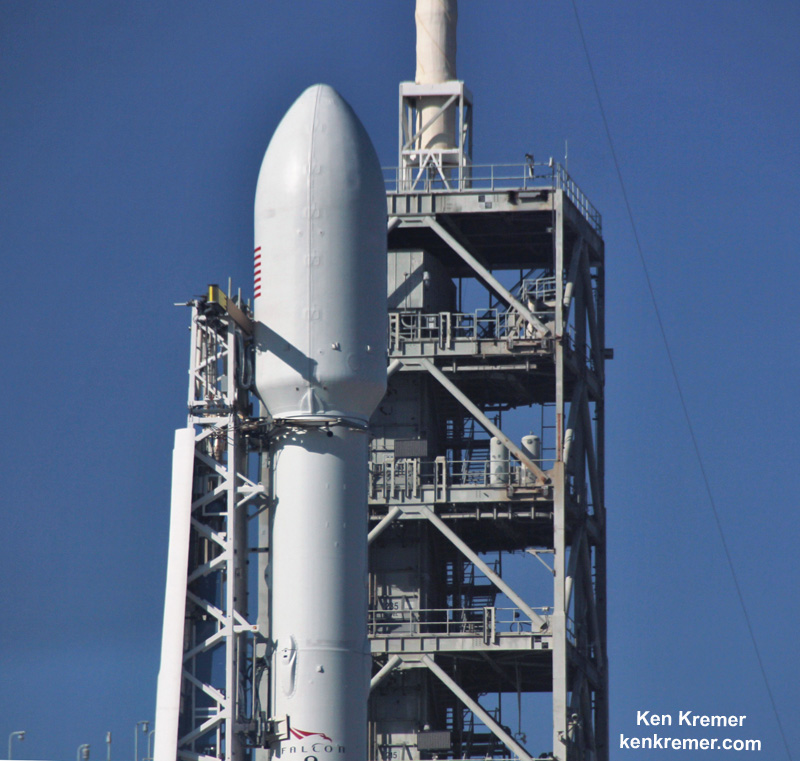
All of SpaceX’s launches this year from Florida’s Spaceport have taken place from NASA’s historic Launch Complex-39A at the Kennedy Space Center.
Pad 39A became SpaceX’s only operational Florida Space Coast launch pad following a catastrophic launch pad accident last year on Sept. 1, 2016 that took place during a routine fueling test that suddenly ended in a devastating explosion and fire that completely consumed the Falcon 9 rocket and Amos-6 payload and heavily damaged the pad and support infrastructure.

Since the Amos-6 accident workers raced to finish refurbishments to NASA’s long dormant pad 39A to transform into operational status and successfully launched a dozen missions this year.
Simultaneously additional crews have been hard at work to repair damaged pad 40 so that flights can resume there as soon as possible for the bulk of NASA, commercial and military contracted missions.
Meanwhile SpaceX wants to upgrade pad 39A to launch the Falcon Heavy and crewed Dragon flight. But those launches cant take place until pad 40 resumes operational status.
The Dragon CRS-13 mission was recently announced as the maiden mission for the reopening of pad 40.
Altogether Dragon CRS-13 will count as the fourth SpaceX Dragon liftoff of 2017.
The 20-foot high, 12-foot-diameter Dragon CRS-13 vessel will carry about 3 tons of science and supplies to the orbiting outpost and stay about 4 weeks.
It will be a reused Dragon that previously flew on the CRS-6 mission.
“The Dragon [CRS-13] spacecraft will spend about a month attached to the space station,” NASA said.
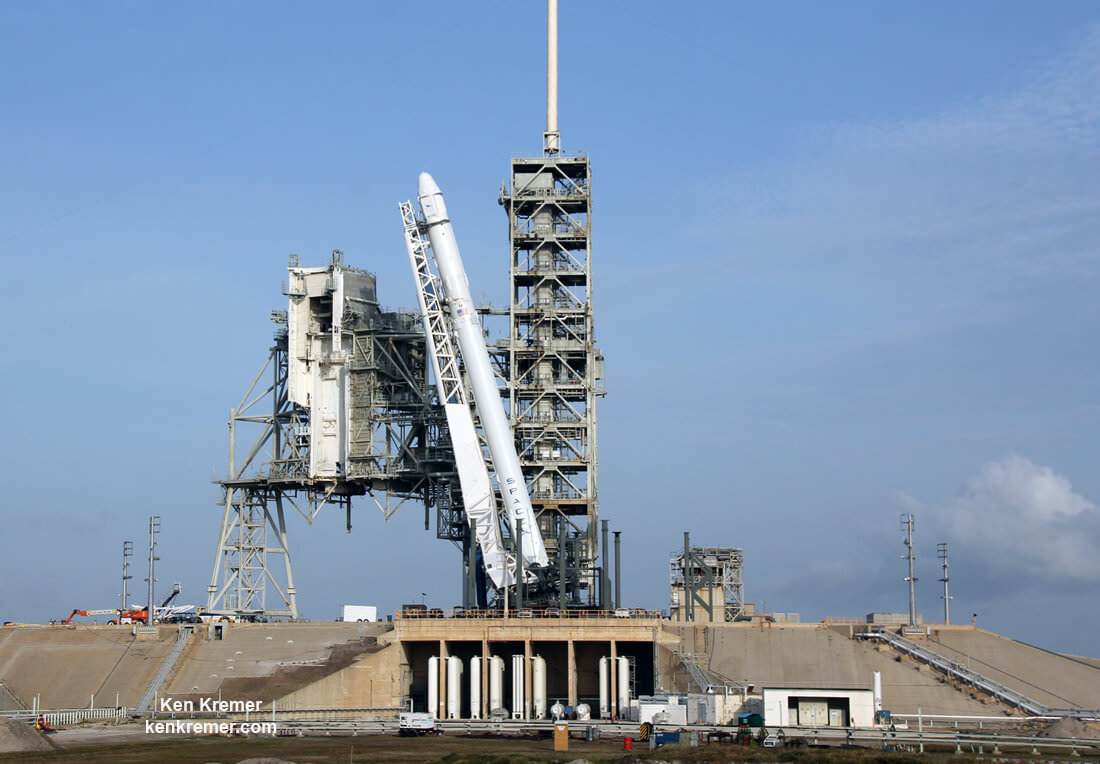
The prior Dragon CRS-12 resupply ship launched from pad 39A on Aug. 14, 2017 from KSC pad 39A and carried more than 6,400 pounds ( 2,900 kg) of science experiments and research instruments, crew supplies, food water, clothing, hardware, gear and spare parts to the million pound orbiting laboratory complex.
Dragon CRS-9 was the last ISS resupply mission to launch from pad 40 on July 18, 2016.
The recently arrived Orbital ATK Cygnus cargo ship is expected to depart the station from the Earth facing Unity node on Dec. 3 to make way for Dragon’s berthing at the Harmony node.
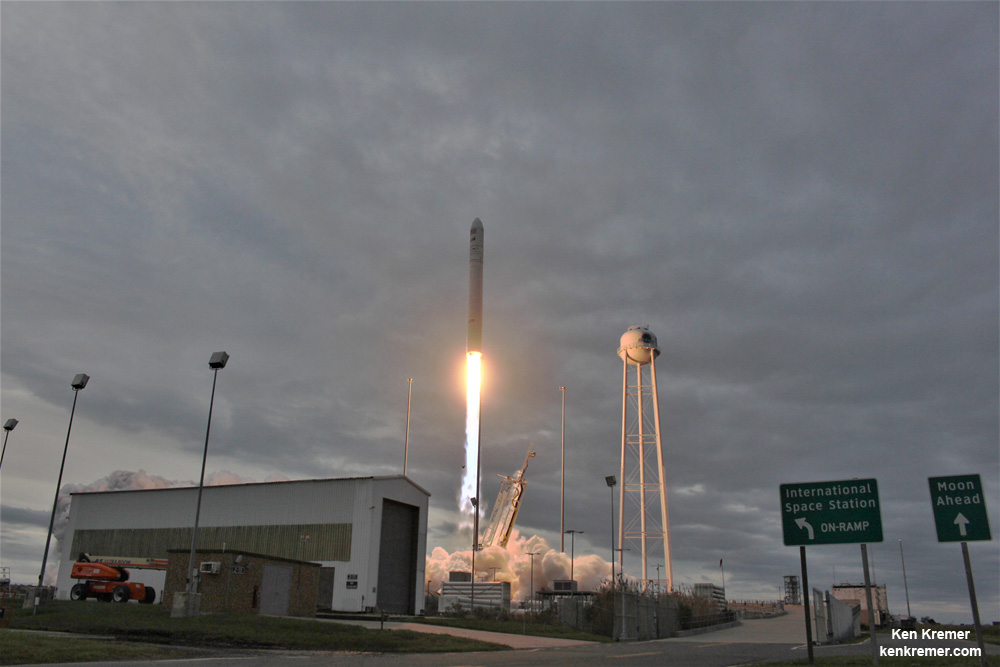
Watch for Ken’s continuing onsite coverage of SpaceX CRS-13, Zuma and KoreaSat-5A & Orbital ATK OA-8 Cygnus and NASA and space mission reports direct from the Kennedy Space Center and Cape Canaveral Air Force Station, Florida.
Stay tuned here for Ken’s continuing Earth and Planetary science and human spaceflight news.
